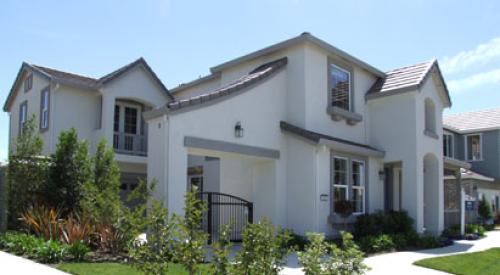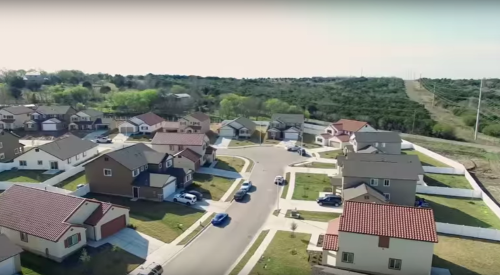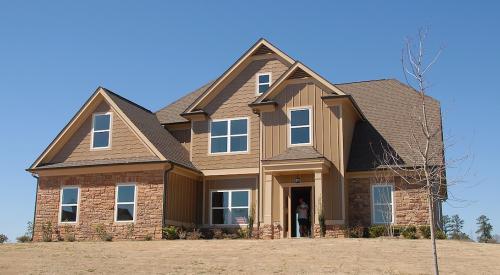Whether one rents or owns may be more a stage-of life decision rather than a choice determined by being part of a particular generation. Older households generally are expected to stay put in their owned homes. However, Tony Green, managing partner of The Pinehills, a master planned community in Plymouth, Mass., presented a scenario during a conference session at the recent PCBC held in San Diego that speaks to one source of demand for rental housing.
Seeing an unmet need for rentals, The Pinehills management introduced plans to build apartments. Homeowners were concerned and expressed fears about changing the character of their community and decreasing property values. But a middle-aged, recently widowed Pinehills homeowner put a face on this particular housing need. Due to her new circumstance, she needed to find affordable housing but still wanted to stay in The Pinehills.
During a community forum, she explained to fellow homeowners that their opposition to apartments would exclude her from the community she wanted to stay in. Green said that the homeowners relented.
Growing Renter Pool Is Older, Wealthier
An annual report released by the Joint Center for Housing Studies of Harvard University reveals that the growing pool of renters is coming from older and wealthier households. The report, titled “The State of the Nation’s Housing,” says that renter household growth tracked by the Housing Vacancy Survey has averaged 770,000 annually since 2004, making 2004 to 2014 the best 10-year period for renter growth since the late 1980s.
Households aged 45 to 64 account for about twice the increase in renters than do households under the age of 35. Even households in the top half of the income distribution, generally assumed to be homeowners, contribute 43 percent to the growth in renters. The highest demand in history for rental housing consequently pushed multifamily starts to its highest level ever in a quarter century, with developers adding 1.2 million units since 2010.
The report credits single-family homes with helping to meet the current demand for rental housing. Besides mom-and-pop landlords, companies such as Waypoint Homes, an Oakland, Calif., subsidiary of Starwood Property Trust, have bought and renovated more than 10,000 houses for lease in seven states. Renters in single-family detached homes increased by 3.2 million between 2004 and 2013 and lifted the single-family share of occupied rentals to 35 percent from 31 percent.
Single-Family Home Landscape
Despite the expansion of rental stock, the national vacancy rate dipped to its lowest point in almost 20 years and the market is likely to remain tight as Millennials move from their parents’ homes and form their own households. Indeed, the Joint Center projects that the combination of young adults and immigrants to the U.S. should return annual household growth to its longer-run average of about 1.2 million through 2025. These new households may be renters first but are likely to participate as first-time and move-up homebuyers, particularly as today’s young adults move into their 30s and 40s.
The Joint Center’s latest projections indicate that adults younger than 30 will account for more than 20 million new households during the next 10 years, and that most of those will be renters. However, the middle class is burdened by rising rents, which, at 3.2 percent, have outpaced inflation by double. The study reports that almost 50 percent of renters see more than half of their income consumed by the cost of housing, and that burden is creeping up the income ladder. Twenty percent of renters who earn between $45,000 and $75,000 a year are now weighed down by the cost of renting.
The most likely prospects for single-family homes are probably middle-aged and married with kids; households headed by a single parent; and childless married couples. But the progress of single-family starts is still sluggish, the report says. Though starts last year broke 1 million, the Joint Center adds that, housing crash notwithstanding, that number would have been a 50-year low. However, some mitigating developments include the slowdown in existing home sales and foreclosure-related sales, with slight growth in non-distress–related sales.
Limited Equity Still a Factor
“The lingering effects of the housing crash are clear,” says the report. “Despite the rebound in home prices, many homeowners are still left with negative or limited equity.” Using statistics collected by CoreLogic, the study cites the number of homeowners with less than 20 percent equity at 15 million. “Since these owners would be hard-pressed to cover the costs of selling their homes and also come up with a down payment on another property, they are effectively shut out of the housing market,” the report says.
While unemployment is below 6 percent and the U.S. has seen steady job growth since 2010, the Joint Center’s report cites the long-term drop in household income as a crucial concern. Median household income in 2013 was $51,900, off 8 percent from 2007 and comparable to 1995 levels. The report counters with a bright spot: Signs in the beginning of 2015 point to a lift in wages that could provide a welcome boost to the housing industry.













